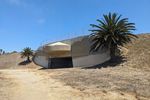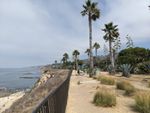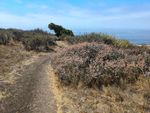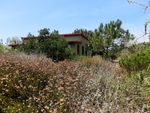White Point Nature Preserve
★★★★☆
Mostly flat, with hills along the west and north. Views of the ocean and (on a clear day) Catalina Island. Not much shade except for one stand of trees at the foot of the hills, the garden around the visitor center, and the bunkers.
It’s not as geologically interesting as Forrestal Reserve, and when I went hiking there in August it was mostly dry grass and dry bushes, but there’s wildlife, and there’s a native plants garden around the visitor center that’s watered and maintained, and there’s the ruins if you’re interested in that.
Wait, Bunkers? Ruins?

Information boards scattered at points along the trails tell the story, along with the earlier history of the site back to the native Tongva villages and the Spanish ranchos.
Nearby

If you want to make a day of it, you could hike the preserve in the morning, have a picnic lunch at the park, and hit the beach in the afternoon.
Getting there
Follow Western all the way to the coast and then turn left. The road runs past the entrance to the beach parking and a park to the right, and there’s a gate on the left just at the end of the road that leads to a gravel parking lot for the nature preserve. You can also park along the street once you get past the park, or you can pay for beach parking.
More info at White Point Nature Preserve.


